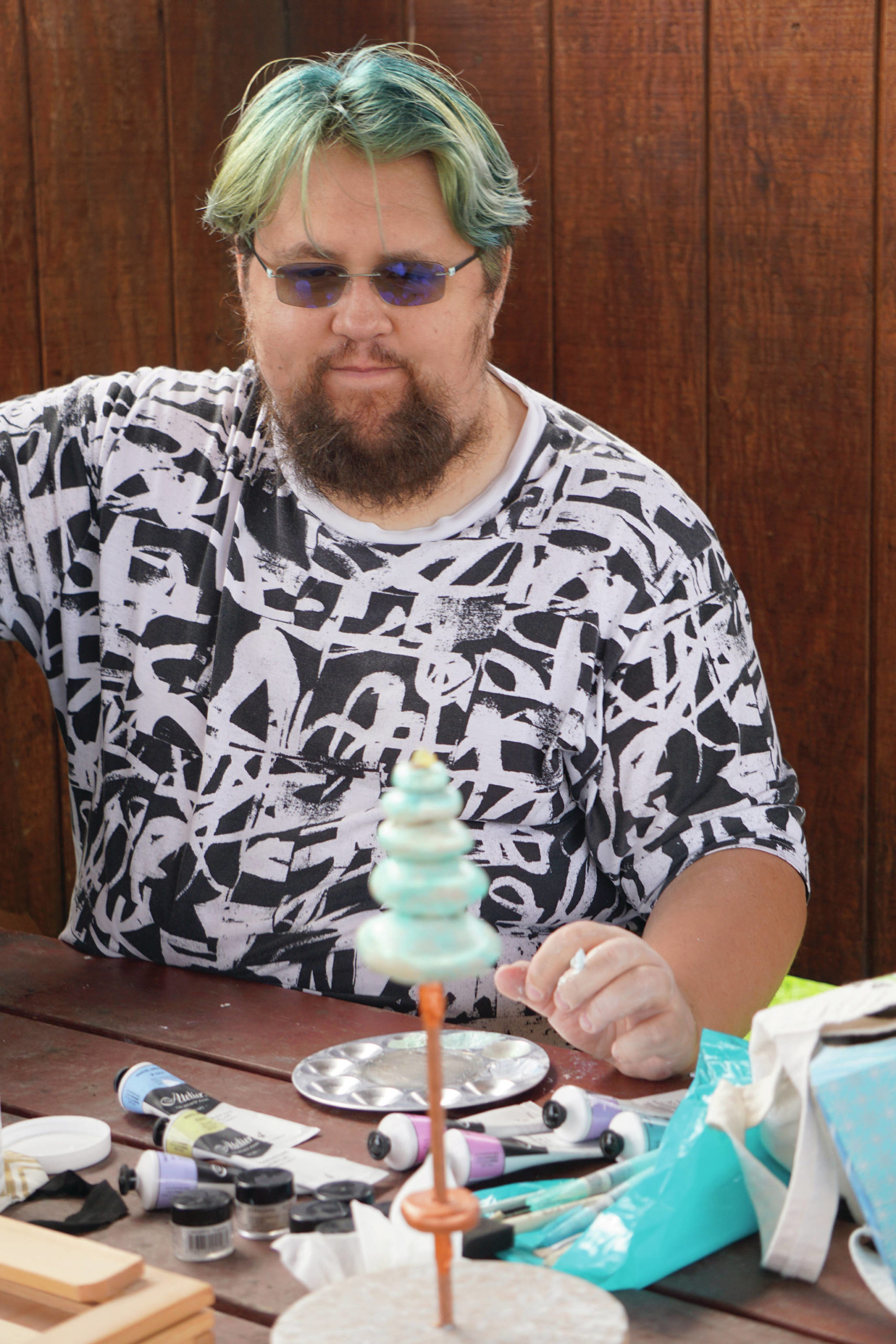A new art project sponsored by Bunnell Street Arts Center looks at a question common to wandering Alaskans: Where do we find our place in this vast landscape?
This month, Bunnell Street Arts Center received a $50,000 Our Town grant from the National Endowment for the Humanities to fund “Tuyanitun: Tuggeht,” a monumental sculpture by Ninilchik artist Argent Kvasnikoff to be installed at Bishop’s Beach. Matching contributions in kind will come from artist and landscape designer Rika Mouw and the city of Homer. Support for the design came from the National Performance Network.
“It’s just very complicated, this project,” said Ninilchik artist Argent Kvasnikoff of his art. “I want it to be as much about the process as the project.”
“Tuyanitun” (pronounced “tee-yah-nee-toon”) is the Dena’ina name for a wayfinding system Kvasnikoff created based on Nignalchint/Ninilchik Village Tribe oral traditions and his study of local geography. Tuyan is the name of a high point at Ninilchik Dome in the Caribou Ridge area northeast of Homer. “Tuggeht” (pronounced “to-get”) is the Dena’ina word meaning “at the shore.” Kvasnikoff said Tuggeht doesn’t match just the political area of Homer
“Homer is built up in many parts,” he said. “There’s the Spit, there’s the inland coast, there’s Diamond Ridge.”
In the Tuyanitun system, Ninilchik Dome represents the center of a five-segment grid like slices of pie that are directions out from the dome. The main direction — the “north” of the concept — is Yunch’, anchored to the Deep Creek drainage running to Tikhatnu or Cook Inlet. The direction Yudu runs toward the Homer Spit and Kachemak Bay, or generally south-southwest.
Stacks of stones or wayfinding markers placed relative to the dome would show the distance by the number of stones and then the orientation in that grid. Each stone represents a day’s journey, Kvasnikoff said, with one day equal to about 10 kilometers.
The sculpture would show this concept. About 12-feet high and made of large acrylic pieces to be fabricated by Midton Acrylics of Lochgilphead, Argyll, Scotland, the parts would be stacked on a metal pole similar to the Fisher-Price “rock-a-stack” toy. Kvasnikoff said he sees the sculpture graduated like a tree.
“That’s something I want to mirror a little bit — the trees you see on the beach and the surrounding,” he said.
Bunnell Street Arts Center artistic director Asia Freeman said it would reference the tsunami warning tower at Bishop’s Beach. Freeman described the sculpture as “like a bunch of blue translucent rocks.” Solar-powered lights will cause the sculpture to glow at night. Kvasnikoff said he wanted the acrylic slabs also to be like sea glass. A post at the top like an agate stone will cap the art.
“The rocks will float above ground like a beacon, like something magical,” Freeman said.
“Tuyanitun: Tuggeht” will go in at the east end of the Bishop’s Beach parking lot near where the boardwalk trail ends. The sculpture will anchor a redesign of Bishop’s Beach Park to include new bathrooms, a fire circle and other amenities. The colors of the sculpture will give ideas for themes and colors, Freeman said. The city has started a Bishop’s Beach Master Plan to be finished by the spring of 2022.
The inspiration for “Tuyanitun: Tuggeht” came out of land acknowledgment efforts over the past years by Bunnell. Kvasnikoff began working on his idea in 2019, and in August 2020, he talked about it at a land acknowledgment workshop sponsored by Bunnell. On its website, Freeman describes its land acknowledgment work as a way “to reinvent this space, to foster and build this community as a place of cultural wealth and opportunity for all. We all benefit from alignment with Indigenous practices of investing in community and sharing what we make, sharing our cultural wealth.” Many of Bunnell’s recent projects invite Indigenous artists to work and create there.
Of those projects, Freeman said, “We’re just trying to show a full, in some ways more complex, complete story of this place. Artists are helping us to do that.”
Kvasnikoff said Bunnell invited him to develop his concept.
“Without Bunnell, this wouldn’t have happened. This was something they stuck their nose in and started asking questions,” he said.
As an Alaska Native artist, Kvasnikoff could be considered practicing the ethic encouraged by the late Inupiaq artist Ron Senungetuk, who advocated that Native art should not be locked in the past, and that Native art should be considered contemporary and modern.
Kvasnikoff said part of acknowledging culture is seeing that Indigenous people aren’t based in a past time period.
“The more kids can understand to be part of this group and culture is not based on this time period, the more they can take ownership,” he said. “They can be full, actualized people with their own goals and values. … I want people to understand that we’re not just a particular look or particular regalia or anything like that. It’s beyond that. What connects us is conceptual. That’s as relevant as anything else in this world.”
To get permission from the city, Bunnell had to approach the Parks, Arts, Culture and Recreation Committee and get approval from the Homer City Council to accept the art on its property. Kvasnikoff also saw it important to also get approval from the Ninilchik Traditional Council, the government of the Nignalchint/Ninilchik Village Tribe.
“Something that surprised Bunnell specifically when we were working on this design and this project, I told them, ‘This is nice, but we can’t say it acknowledges the tribe or the history if we don’t have their approval,” Kvasnikoff said. “That was eye-opening.”
For more on “Tuyanitun: Tuggeht,” including previous talks by Kvasnikoff, visit Bunnell’s website at www.bunnellarts.org/tuyanitun-marker-design.

